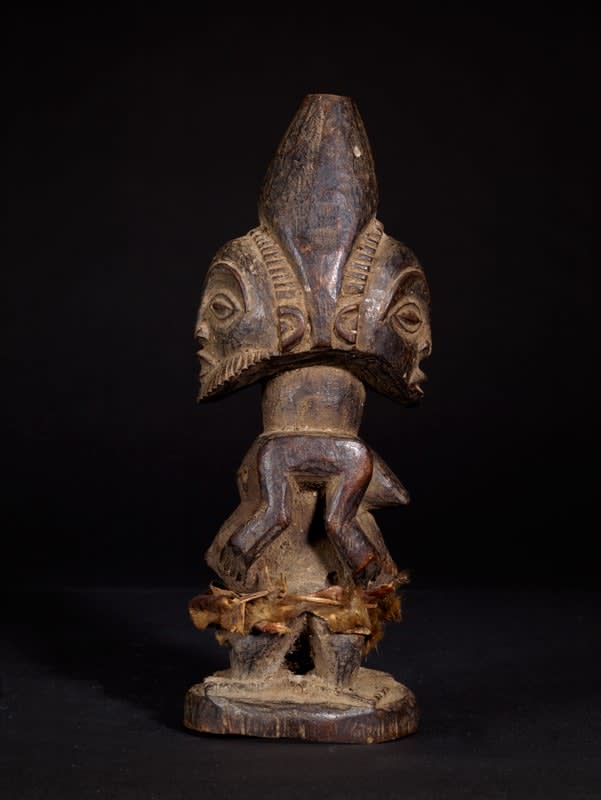Hemba Janus Figure (Kabeja), 19th Century CE - 20th Century CE
wood and animal fur
8.25
DV.001
This beautifully carved Janus (double) figure comes from the Hemba people who today live on the savannah in the southeast region of the Democratic of Congo along the Lualaba River....
This beautifully carved Janus (double) figure comes from the Hemba people who today live on the savannah in the southeast region of the Democratic of Congo along the Lualaba River. The Hemba are broken into a number of chiefdoms with local styles of carving that share similarities but differ in details of sculpting and in the use of body marking. This male and female pair known as Kabeja are owned by the clan head known as the Fumu Mwela. Among the Hemba there are secret societies called Bukazanzi for men and Bukibilo for the women that serve to balance the power of the clan chief. Therefore this joined sculpture of male and female joined together reflects the balance of power between the clan head and the men and women in Hemba society. These figures are present at clan meetings led by the chief (Fumu Mwela) where the figures received offerings and served as intercessors between the living and the dead and to recognize lineage heads and document title to land. Kabeja figures were not strictly considered to be portraits as they depicted rank, social status and ethnic identity through stance, hair-style and dress. The warm colored patination comes as a result of extended use through offerings and touching.
